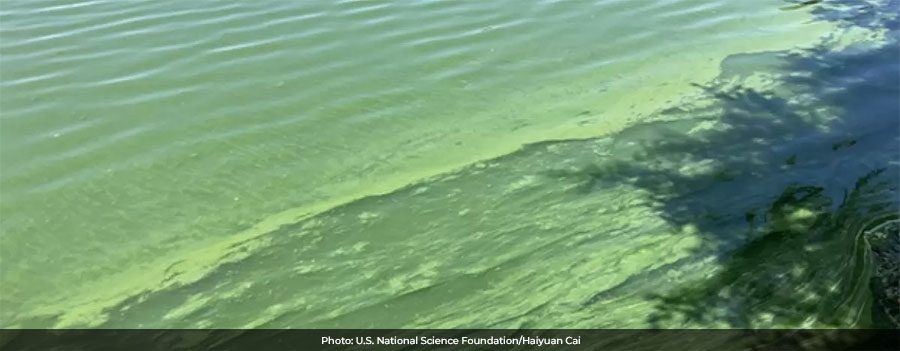Microcystis aeruginosa

Microcystis aeruginosa is a common species of cyanobacteria (often called blue-green algae) that blooms in the fresh and low salinity portions of the Chesapeake and Coastal Bays and can become quite striking if it floats and forms a surface scum. The water may show the appearance of blue-green paint floating or billowing near the surface. Ingestion of waters containing high concentrations of Microcystis can cause abdominal stress in humans leading to precautionary beach closures and can kill dogs and farm animals if they drink significant quantities of the bloom waters. There are many strains of Microcystis and during 2000 a toxic strain was identified from the Sassafras River. The Potomac River below Washington D.C. had massive blooms of Microcystis in the 1960’s and, although they still appear periodically in this region, these blooms have been reduced by improved wastewater treatment.
-
Type: Cyanobacteria (blue-green algae)
-
Scientific Name: Microsystis aeruginosa
-
Fast Fact: During heavy blooms, M. aeruginosa can form green clots similar in appearance to latex paint. First identified in 184
-
Other Names: M. flos-aquae (Wittr.) Kirchner; M. ichthyoblabe Kutetzing
-
Seasonal Dominance: Summer
-
Distribution: Freshwater. Found predominantly in the Potomac (above Indian Head) and in the Upper Bay.
-
References:
- Presscott, G. W. 1951. Algae of the Western Great Lakes. Wm.C. Brown Co. Dubuque, Iowa. page 456.
- Rabenhorst's, L. 1932. Kryptogamen-Flora Cyanophyceae (Geitler, L.). Johnson Reprint Corp. New York. page 137.